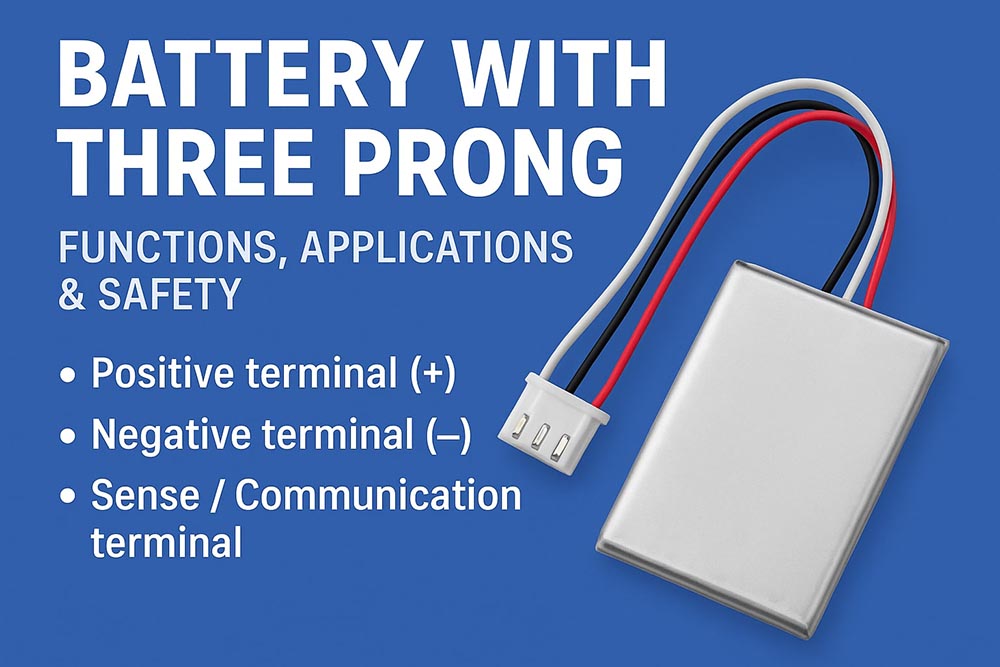Batteries are the lifeblood of modern electronics. While many are familiar with the standard two-terminal design (positive and negative), some batteries include a third prong—commonly seen in rechargeable packs for laptops, drones, power tools, and medical devices. This battery with three prong configuration may look unusual, but it plays a critical role in safety and performance.
Why Do Some Batteries Have Three Prongs?
A battery with three terminals is designed to provide more than just power delivery. The extra connection enables monitoring, communication, and protection functions that a simple two-prong battery cannot offer. This makes three-prong batteries especially important in devices that require stable power and enhanced safety.
The Three Prongs Explained
- Positive Terminal: The main output prong that supplies power to the device, usually marked with a “+” or a red wire.
- Negative Terminal: The ground return prong, marked with “-” or a black wire, completing the circuit.
- Sense/Communication Terminal: The third prong, which may act as a temperature sensor, data line, or voltage monitor. It allows the battery to “communicate” with the device or battery management system (BMS).
Advantages of Three-Prong Batteries
Adding a third prong brings multiple benefits, including:
- Improved Safety: Temperature monitoring prevents overheating and thermal runaway.
- Smart Communication: Devices can read charge levels, battery health, and usage statistics.
- Better Longevity: Optimized charging and discharging cycles help extend battery life.
- Device Compatibility: Some electronics require three-prong batteries to function properly.
Common Applications of Batteries with Three Prongs
You will often find three-prong batteries in:
- Laptops and notebook computers
- Power tools such as drills, saws, and impact drivers
- Drones and remote-controlled vehicles
- Medical equipment where safety is critical
- Electric bikes and scooters
Comparison: Two-Prong vs. Three-Prong Batteries
| Feature | Two-Prong Battery | Three-Prong Battery |
|---|---|---|
| Connections | Positive & Negative | Positive, Negative & Sense |
| Safety | Basic protection | Advanced monitoring & thermal protection |
| Applications | Simple electronics | Smart devices, tools, EVs, drone battery |
| Battery Life | Shorter lifespan | Optimized for longer life |
Safety considerations & best practices
- Always use chargers and BMS hardware designed for your pack chemistry and connector type.
- Confirm the third prong’s function — whether it’s a thermistor, ID line, or voltage sense — before wiring or replacing batteries.
- Do not bypass the sense pin to force charging; doing so can disable safety protections and risk thermal runaway.
- Follow vendor specifications for charge voltage, charge/discharge current, and temperature limits.
- For storage, keep packs in recommended charge states and temperature ranges to slow degradation.
Conclusion
A battery with three prongs may look slightly more complex than a standard battery, but that extra connection is essential for modern electronics. It provides safer operation, smarter communication, and better performance overall. As the demand for high-efficiency and long-lasting energy solutions grows, the three-prong battery design is expected to become even more widespread across industries.
